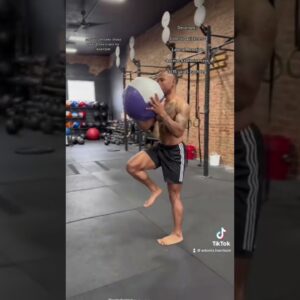Looking to up your soccer game as a goalie? Look no further! In this quick guide, we’ll cover the basics of soccer goalie training, providing you with tips, techniques and advice to help you become the best possible goalie you can be. From blocking shots to mastering your goal kicks, this guide has got you covered. So, whether you’re new to the position or simply want to sharpen your skills, let’s dive in and explore soccer goalie training! #shorts #football #soccer
Introduction
Soccer goalie training is a crucial aspect of the game that requires dedicated and consistent practice. As a goalie, you are the last line of defense, and your performance can determine the outcome of the game. In this article, we will provide you with a quick guide on soccer goalie training, including tips, techniques, and drills that will help you improve your skills and become a better goalie.
The Basics of Soccer Goalie Training
Proper Footwork
Footwork is essential in soccer goalie training. It allows you to move quickly and efficiently to make saves and control the ball. Some basic footwork techniques you can practice include:
- Sidestepping: shifting your weight from side to side to move quickly.
- Shuffle Steps: taking small steps while maintaining a low stance to move laterally.
- Cross steps: crossing one foot over the other to move diagonally.
Positioning
Proper positioning is also crucial in soccer goalie training. You need to be in the right place at the right time to make a save. Some tips for positioning include:
- Staying in the center of the goal: This gives you the best chance of saving shots, no matter where they come from.
- Maintaining a narrow angle: Try to stay close to the goal line so that you can cover as much area as possible.
- Being aware of your surroundings: Pay attention to where the ball is and where your defenders are positioned.
Diving
Diving is perhaps the most exciting aspect of soccer goalie training. It is a technique that requires a combination of speed, timing, and coordination. Some diving techniques you can practice include:
- The collapse dive: diving in the direction of the ball with your arms extended in front of you.
- The extension dive: diving to the side with one arm extended to make a save.
- The flying save: jumping and diving through the air to make a save.
Advanced Techniques in Soccer Goalie Training
Dealing with One-On-Ones
A one-on-one situation with an attacking player can be a challenging scenario for a goalie. To improve your skills in this area, you can practice:
- Closing down the angle: moving towards the attacker to make the goal appear smaller.
- Staying on your feet: staying upright as long as possible to keep the attacker guessing.
- Making yourself big: spreading your arms and legs to cover more area.
Dealing with Crosses
Dealing with crosses is another advanced technique that requires practice. Some drills you can try include:
- The W drill: practicing diving and catching balls that are crossed in from the wings.
- The power catch: jumping and catching crosses with two hands.
- The punch: punching the ball away from danger when you cannot catch it.
Distribution
Distribution is an essential aspect of soccer goalie training. It involves being able to pass the ball accurately and confidently to your teammates. Some tips for improving your distribution include:
- Practicing throwing: developing a strong and accurate throwing technique can help you launch counterattacks quickly.
- Practicing kicking: improving your kicking technique can allow you to distribute the ball further upfield.
- Developing your decision-making skills: learning when and where to pass the ball is just as important as the technique itself.
The Mysterious Video
While researching soccer goalie training online, you may come across a mysterious and interesting video related to content writing. The video is embedded in the content, and its duration is unknown. Unfortunately, the speaker’s background and credibility are not mentioned, and there is no additional context provided.
Conclusion
Soccer goalie training takes time, effort, and dedication, but it is a rewarding endeavor. By practicing the basics of footwork, positioning, and diving, as well as the more advanced techniques of handling one-on-ones and crosses and improving your distribution, you can become a more confident and effective goalie. Remember to stay positive and enjoy the process.
FAQs
- How often should I practice soccer goalie training?
Ans: It is recommended to practice at least three times a week to see significant improvement in your skills.
- How do I improve my reaction time as a goalie?
Ans: You can improve your reaction time by doing drills that involve quickly reacting to the ball, such as reaction ball drills.
- How important is fitness in soccer goalie training?
Ans: Fitness is crucial in soccer goalie training. As a goalie, you need to have the stamina and endurance to be able to move quickly and efficiently throughout the game.
- What equipment do I need for soccer goalie training?
Ans: You will need gloves, cleats, a ball, and cones.
- Can I improve my soccer goalie skills without a coach?
Ans: While having a coach is ideal, you can still improve your skills by practicing on your own or with a partner and watching instructional videos online.
